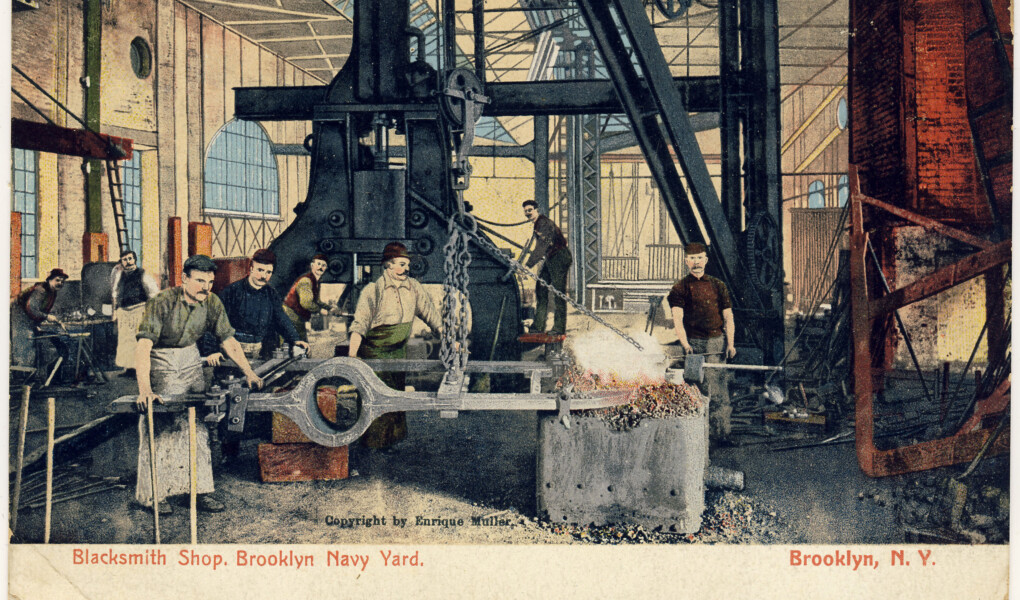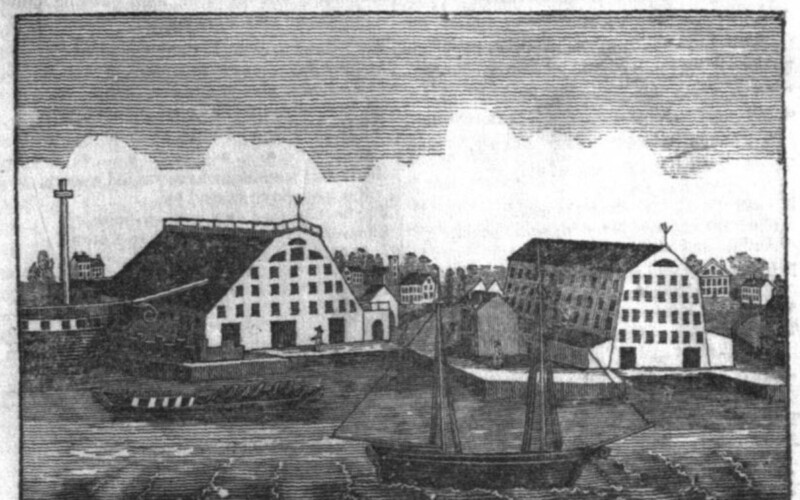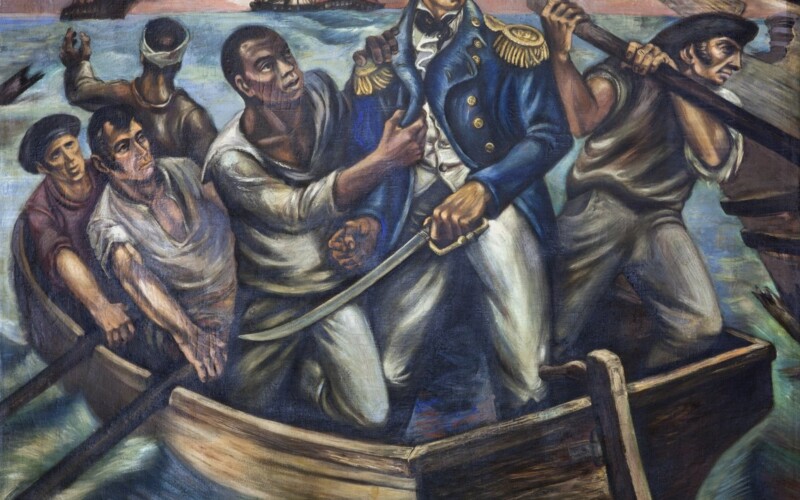Waterfront workers were at the vanguard of the labor movement; the word “strike” has its origins in work stoppages on the London docks in 1768, when sailors “struck” the sails of ships to keep them in port. In New York, skilled shipworkers organized some of the earliest trade associations, and they agitated for steady wages and reduced working hours as far back as the 1820s. At the Brooklyn Navy Yard, federal regulations and political patronage often stifled workers’ ability to strike, but by the time of World War II, the massive workforce of the Yard was heavily unionized, and the good-paying jobs would form the backbone of Brooklyn’s middle class. In this virtual program, we will examine the long history of labor organizing at the Yard, how workers fought for their rights in the absence of formal unions, and how the unions ultimately proved powerless against changing politics and economics of the shipbuilding industry in New York.
- John G.M. Sharp, “The Washington Navy Yard Strike and ‘Snow Riot’ of 1835
- John R. Stobo, The Brooklyn Navy Yard: Civil Servants Building Warships
- “The Old Ship-Builders of New York” (Harper’s Magazine)
- Arnold Sparr, “Looking for Rosie: Women Defense Workers in the Brooklyn Navy Yard, 1942–1946”
- “March on Washington Movement, 1941–1947” (Black Past)
- “Pouring Concrete: The Brooklyn Navy Yard Prepares for War” (Turnstile Tours)




